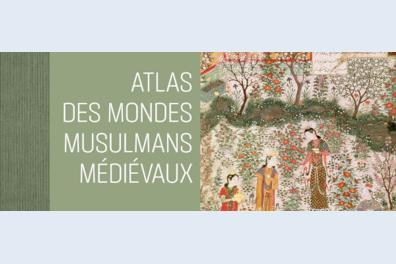Publication of the book: Atlas of Medieval Muslim Worlds

The fruit of six years' collective work by historians and a cartographer, it is aimed at a wide audience, not just specialists. It's a handsome, extensively illustrated work, with each thematic double-page spread featuring one or more maps, a historical summary text, extracts from translated medieval sources and material documents from the period (objects, monuments, manuscripts, works of art...).
Offering a broad panorama of the history - political and military, economic and social, religious and cultural - of the medieval Muslim worlds, from Late Antiquity to the early modern period, is the ambition of this Atlas, which is based on nearly two hundred original maps, at all scales, accompanied by texts, extracts from sources and illustrations.
The Islamic conquests contributed to the formation of a vast set of territories where Muslims held political power, dominating peoples with different customs, languages and religions. It spanned three continents - from al-Andalus in the west to Islamized India in the east - and opened onto two major maritime spaces, the Mediterranean and the Indian Ocean. This atlas explores the routes taken by merchants, pilgrims, travellers, students and scholars; it testifies to the scale of the urban phenomenon and the wealth of exchanges in this area as a whole, and illustrates its integration into a world-economy in the making.
Muslim communities split into different branches: Sunnis and Shiites, but also a myriad of other minority currents that mark the religious topography to this day. While fratricidal struggles were important, conflictual relations with various external enemies - conquests and jihad, crusades and invasions - reshaped internal balances as well as external borders. Diplomatic activity throughout Eurasia and from the Atlantic to the Pacific, and the circulation of ideas and literary and architectural models, bear witness not only to commercial exchanges, but also to the extent of the networks developed over the centuries.
The researchers who have produced this collective work, launched within the "Medieval Islam" team of the Orient & Mediterranean laboratory (CNRS), are specialists in various fields of medieval history of the Muslim worlds. Through a renewed historiography, they provide an overview and understanding of a global and connected history of medieval Muslim worlds.
.